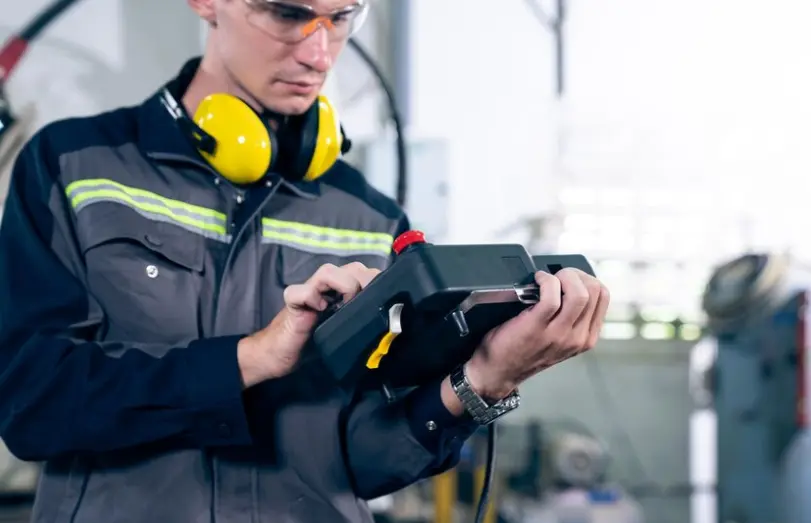
The Importance of Subsurface Defect Ultrasonic Testing in Industrial Applications
In the world of industrial fabrication, subsurface defect ultrasonic testing plays a crucial role in ensuring safety and reliability. Whether it’s a pressure vessel in a chemical plant or a structural component in heavy industry, identifying flaws before they lead to failure is critical. That’s where subsurface defect ultrasonic testing (UT) comes in—a proven non-destructive testing (NDT) technique that detects internal issues without damaging the material.
This post explains how subsurface defect ultrasonic testing works, its advantages, and why it’s a trusted tool in vessel fabrication and inspection.
What Is Ultrasonic Testing (UT)?
Subsurface defect ultrasonic testing is a non-destructive method that uses high-frequency sound waves to detect internal imperfections in materials. A probe sends ultrasonic pulses into a component, and when those waves hit a discontinuity—like a crack or void—they reflect back to the probe, creating signals that can be interpreted to determine size, location, and severity.
Types of UT Methods
- Straight Beam Testing: This method sends sound waves directly into the material to detect flaws parallel to the surface.
- Angle Beam Testing: In this method, angled probes are used to identify defects that may not be detected with straight beams, such as those beneath welds.
- Phased Array UT (PAUT): This technique uses multiple elements in a probe to steer and focus the sound beam electronically. It provides a detailed, real-time visual map of internal structures.
Importance in Industrial Applications
Subsurface defect ultrasonic testing is essential in industries where component failure is not an option. For instance, in pressure vessel manufacturing, subsurface defect ultrasonic testing ensures that welds and base materials meet safety standards before the equipment goes into service.
How Subsurface Defect Ultrasonic Testing Detects Flaws
Sound Wave Behavior and Signal Reflection
Ultrasonic waves travel through a material until they encounter a boundary, such as a defect or the back wall of the component. Subsurface defect ultrasonic testing captures these reflections and displays them as interpretable signals.
Common Defects Identified
- Cracks
- Voids and porosity
- Incomplete fusion in welds
- Laminations or inclusions
Benefits Over Other NDT Methods
Compared to other NDT methods like radiographic testing, subsurface defect ultrasonic testing offers real-time results, improved safety due to the absence of radiation, and higher sensitivity to minute flaws.
Ultrasonic Testing Process Step-by-Step
Each step in the subsurface defect ultrasonic testing process—surface prep, scanning, evaluation, and documentation—is critical for accuracy and repeatability.
1. Surface Preparation and Equipment Setup
First, the test area must be clean and smooth to ensure consistent contact between the probe and the surface. A couplant (usually a gel or water-based solution) is then applied to facilitate the transmission of ultrasonic waves from the probe into the material. Furthermore, the probe is calibrated using reference standards to ensure accuracy.
2. Scanning and Data Collection
Next, the technician moves the probe in a predetermined pattern to scan the test area. The equipment displays signals in various formats:
- A-scan: A one-dimensional time-vs-amplitude graph
- C-scan: A two-dimensional top view of the scanned area
The technician observes signal changes to identify reflections that suggest discontinuities.
3. Evaluation and Reporting
After collecting data, the technician interprets the signals and compares the results to acceptance criteria set by standards such as ASME Section V or ASTM E213. A report is generated that includes flaw locations, sizes, test parameters, and technician certifications for traceability and quality control.
Standards and Qualifications in UT
Applicable Codes and Standards
- ASME Boiler and Pressure Vessel Code (Section V)
- ASTM E213 (Standard Practice for UT of Metal Pipe and Tubing)
- API 620/650 (Storage tank construction standards)
Technician Certification
UT must be performed by certified personnel trained according to:
- SNT-TC-1A:(Recommended Practice from ASNT)
- ISO 9712:(International certification standard)
Certification ensures that technicians understand both the physics of sound and the practical application of the technology.
Repeatability and Documentation
Ensuring Integrity Through Sound Science
Subsurface defect ultrasonic testing is an indispensable tool in modern industrial inspection, especially in the fabrication and maintenance of pressure vessels, piping systems, and structural components. Its ability to detect hidden flaws without damaging the material makes it a cornerstone of non-destructive testing (NDT). From angle beam techniques to advanced phased array systems, UT offers unmatched precision, safety, and real-time insights.
Ultimately, By adhering to industry standards and ensuring that technicians are properly certified, companies can trust UT to safeguard quality, meet compliance requirements, and ultimately protect lives and assets. Whether you’re ensuring weld integrity or verifying base material soundness, ultrasonic testing delivers reliable results where it matters most—beneath the surface.
Need a reliable partner?
Red River specializes in the design and manufacturing of pressure vessels. We also fabricate related items such as prefabricated spools and skid packages.
Reach out to us today and experience the Red River difference. Where American-made products and American Values come together, we care more.
Frequently Asked Questions (FAQ)
1. What materials can be tested with UT?
2. How deep can UT detect subsurface flaws?
Depending on frequency and material, UT can detect flaws several inches below the surface.
3. Is UT better than radiographic testing?
4. Does UT require access to both sides of a material?
5. How accurate is UT in flaw detection?
When performed by a certified technician, UT can detect flaws as small as 0.1 mm.
6. What kind of documentation does UT generate?
UT reports typically include test settings, scan data, flaw locations, and certification info for quality assurance.
7. Can UT be automated?
8. What qualifications are needed for UT technicians?
Key Takeaways
- Subsurface defect ultrasonic testing is a reliable, non-destructive method for identifying flaws in metals and other materials.
- It uses high-frequency sound waves to locate internal discontinuities, ensuring the structural integrity of components.
- Compared to other NDT techniques, subsurface defect ultrasonic testing stands out for its safety, portability, and precision.
Proper certification, training, and code compliance are essential to ensure valid subsurface defect ultrasonic testing results.
